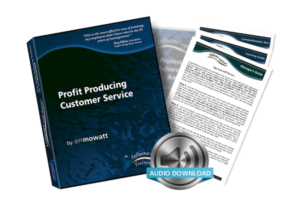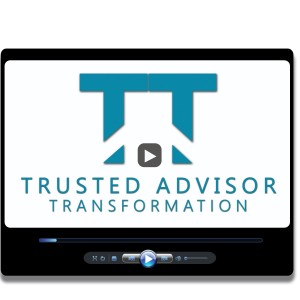How to Build Trust by Managing Customer Expectations
6 tips for reducing customer frustration
Are you noticing how customers are becoming more demanding? When managers bring me in to deliver customer service training for their teams, one of the most frequent concerns they share is how customers seem to be angrier, more frustrated, and more rushed than ever. But is that really true?
My experience over the 30 plus years that I’ve been speaking and training on the topic, is that customers aren’t necessarily grumpier. It’s that they occasionally receive service that’s faster than expected, like Amazon’s overnight delivery. And they’re also doing business with organizations like Uber that report real time the driver’s location, and exactly when they’ll arrive. So, customers aren’t necessarily grumpier, but their service expectations are higher.
The good news for managers and frontline staff is we don’t necessarily need to speed up our service; especially when there are staffing shortages and supply chain issues. We just need to improve the way we manage customer expectations. Here are 6 easy ways to make that happen.
1. Opt for Trust over People Pleasing
No one likes dealing with aggressive customers. To avoid confrontations, frontline staff may simply give-in and tell customers what they want to hear. Or employees appease customers with commitments like, “I’ll try” or “I’ll do my best”. The problem is customers interpret those remarks as promises. And when those promises aren’t fulfilled, we lose trust.
That’s why in our Trusted Advisor Customer Service training sessions, team members learn that we build more trust by saying ‘no’ to a customer – and instead set realistic timelines – than by being wishy washy about commitments.
2. Mention Typical Industry Timelines
Interior designers ordering custom furniture are quick to remind clients about 12 week turnaround times. Factory ordered vehicles generally have months long wait times. So, share your industry average delivery times along with any steps your organization takes to beat that average.
3. Tell – Don’t Ask
A common reaction when a customer or coworker asks you to complete a task is to ask, “When do you need that completed?” Unfortunately, asking that question tells the person that you plan on putting it off as long as possible. Not good. So don’t ask customers or co-workers for their timelines. Instead, proactively offer yours: “I’m on it, and I’ll have it all ready for you by end of business day on Thursday.”
4. Sound Cheerful, not Grudging
The tone of our communications has a surprisingly large influence on customer perception. For example:
- Rather than saying, “I’ll have to check our inventory and get back to you.”, instead say, “I’ll be happy to check our inventory and get back to you.”
- Rather than saying, “We won’t be able to get a service person there until Wednesday,” instead say, “We can have a service person there as soon as Wednesday.”
Choosing positive wording over negative helps customers become less frustrated and more cooperative.
5. Aim to Exceed Expectations
When things go wrong and we do indeed mess-up on delivery times, we of course need to fix the problem, and more importantly, fix the relationship. It’s not enough to finally give the customer what they should have received in the first place. We also need to address their frustration and the hassle factor. In some cases that might mean offering a price adjustment or bonus. However, before offering extras we need to find out the customer’s expectation.
You might say for example, “We value your business and we want to do the fair thing. What do you think would be fair?” In my experience most customers become so relieved at hearing this that their requests become minimal. Then you can add a slight extra that exceeds their expectations – without giving away the proverbial store. That’s when customer becomes so thrilled, they become more loyal – not despite the foul-up – but because of it.
6. Dial for Dollars
Often, we jump through hoops behind the scenes to ensure our products and services are delivered on time, but we get little credit for the success. Customers are so focused on their own priorities, that our service becomes background wallpaper; barely noticeable.
So customer-centric organizations incorporate after sales and service follow-up courtesy calls to ensure the customer is happy with solution. It’s also an opportunity to suggest ways the customer can use the product or service to full advantage. Plus, you can plant seeds for additional products and services to augment their purchase. Everyone wins.
Bottom line: Work becomes easier and less stressful for customers, team members, and suppliers when employees learn how to managing customer expectations. How about you and your team? Could they use a tune-up of their customer communication skills?
Written By Jeff Mowatt (original content – not AI generated)
Was this helpful? For additional information on this topic: Customer Service Trends/Strategic Planning
You’ll find more of Jeff’s Trusted Advisor Customer Service tips or subscribe to receive a new Business Building Tip every two weeks.
Curious about Jeff’s training resources? Click on Shop for details. If you’re interested in a customized presentation for your organization, contact Jeff at [email protected]
Jeff Mowatt is a customer service speaker, customer service training professional, award-winning speaker, and best-selling author. To inquire about engaging Jeff for your team visit www.JeffMowatt.com
Other recommendations that would complement this topic:
Influence with Ease – You already know that whatever your message, customers and coworkers are persuaded – not by your title – but by how much they trust you. Jeff shares 30-second tips that strengthen trust in virtually all of your communications.
“Becoming a Service Icon in 90 Minutes a Month” gets to the core of customer service – the organization’s underlying service and sales culture.
Trusted Advisor Transformation© Online Course 15 minutes a day for 7 days. View on any computer or mobile device. Communication secrets that position you as a Trusted Advisor
 Profit Producing Customer Service in today’s competitive marketplace your team’s customer service is often your greatest differentiator. The challenge is ensuring that everyone gets consistent training on how to deliver one-of-a-kind service, where price becomes less relevant. This training package reveals how employees can provide REMARKable service.
Profit Producing Customer Service in today’s competitive marketplace your team’s customer service is often your greatest differentiator. The challenge is ensuring that everyone gets consistent training on how to deliver one-of-a-kind service, where price becomes less relevant. This training package reveals how employees can provide REMARKable service.



